
The Yamaha CR-640 Natural Sound Receiver was a mid range offering from Yamaha in 1979. It was on the market until about 1981 and retailed fro $395.00. It has a slightly more modern look than Yamaha’s earlier CR-x20 line. The front panel has three distinct rows with most of the auxiliary controls on the bottom row. The meters, selector switches and volume and tuning knobs are on the middle row. The top is dominated by the full length dial. It also has a matte finish look to the knobs. When settled into the minimalist wood cabinet it has a very clean and bright look. At 40 watts per channel into 8 ohms it has enough power for most speaker setups.
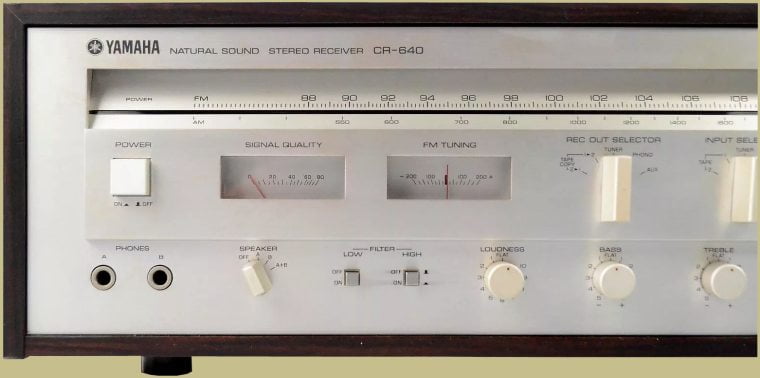
If you’re unfamiliar with Yamaha’s Natural Sound line the idea behind it was to reproduce the source signal with as little deviance from the original recording as possible. In other words, Yamaha believed that the receiver should not change the sound in any way. Other receivers tended to be more bass oriented or favored the higher frequencies. Yamaha’s did not. If you’ve listened to other receivers for awhile you might initially find Yamaha’s sound to be thin or weak. But, after listening for a bit you realize that it may actually be a more accurate and clean representation of the original source. The Natural Sound isn’t for everyone though. Some prefer a warm, fatter sound.
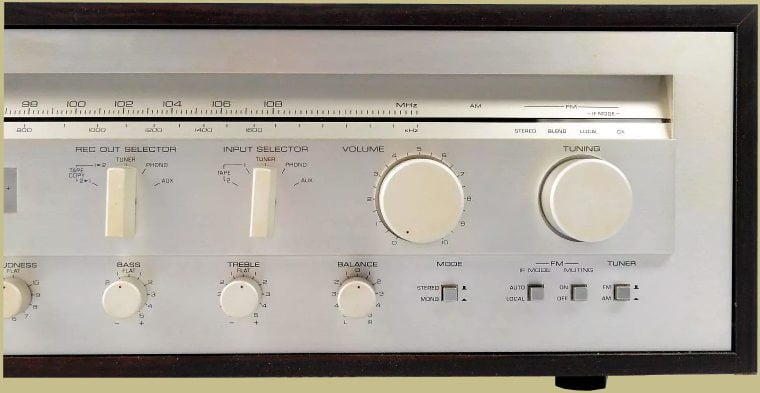
Specifications:
Tuning range: FM, MW
Power output: 40 watts per channel into 8Ω (stereo)
Frequency response: 20Hz to 20kHz
Total harmonic distortion: 0.02%
Damping factor: 40
Input sensitivity: 2.5mV (MM), 120mV (line)
Signal to noise ratio: 78dB (MM), 86dB (line)
Output: 120mV (line)
Speaker load impedance: 4Ω (minimum)
Semiconductors: 9 x IC, 1 x FET, 43 x transistors, 12 x diodes, 3 x zener diodes, 6 x LED
Dimensions: 510 x 167 x 385.5mm / 20 x 6 9/16 x 15 1/4 inches
Weight: 12.6kg / 27 lbs 13 oz
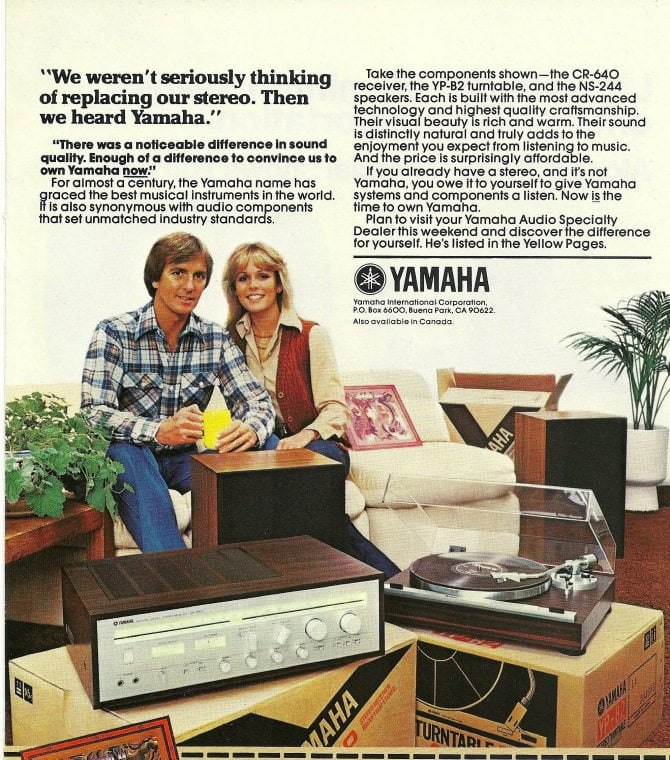
There was also a black version of the CR-640. Most likely a European version. It does look good in black! The CR-640 is 20 inches wide which is a little too wide for most standard audio racks.
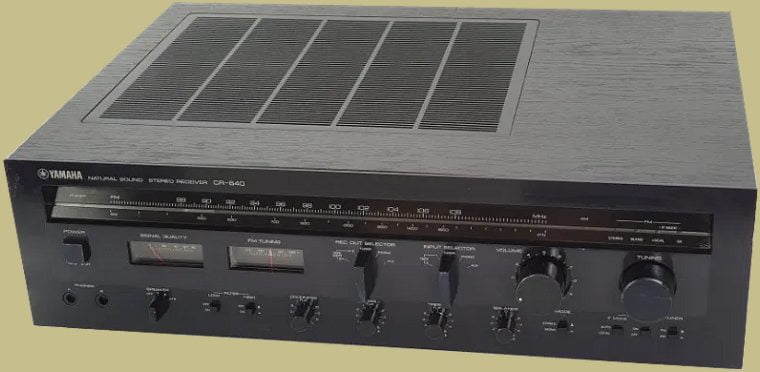
The CR-640 has built-in AUTO-DX and Auto Blend circuits that detect signal strength in order to make fine adjustments to how the signal is handled. Increasing selectivity and enhancing the signal-to-noise ratio in the higher frequencies results in much clearer reception on poor signals. When reception is strong the circuits focus on reducing distortion. Which circuit is being utilized is indicated by small LED’s just above the tuning knob.

The CR-640 does use STK packs instead of discrete components which can be a problem. Some of the electronic components, the transistor packs especially, are very difficult to find today. So, any issue with them can be costly to repair. The earlier CR-x20 series was an all discrete design.
The lamps in the CR-640 tend to burn out as well. There are 4 bulbs for the tuning window, 3 bulbs for the meter windows, and 1 bulb for the tuner dial indicator. The tuning dial bulbs are just twist lock bulbs and are easy to change. The meter lamps require splicing or soldering but are not difficult to replace. The tuning indicator lamp is also wired and is more complicated to change. There are usually lamp kits available on eBay. You can find what is currently available HERE.

The Yamaha CR-640 is a nice mid range receiver. If you like the neutrality of its ‘Natural Sound’ then it may be a good choice for you. The power pack transistors are hard to find if they fail but they tend to be reliable so in most cases they shouldn’t be a problem. If you prefer all discrete components then you might be better off with the CR -420 or similar receiver.

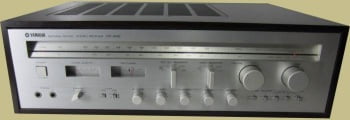
Do you have any spare knobs for the Yamaha CR-640? I’m looking for the Input selector knob.
I have a question about the Yamaha CR-640. I have one that I have not used for years because the volume control died. It started to give off static noise when changing volumes. It this one of the difficult things to repair on the unit or is it worth the effort/cost? Thanks. I enjoyed reading your review.
It might be a very easy fix. Usually static is caused by a dirty volume potentiometer. Just get some electrical contact cleaner like DeOxit and pull off the case so you can reach the pot (potentiometer) and spray inside it with the contact cleaner (I would clean all the pots – not just the volume). There are quite a few tutorials on YouTube. Just type “cleaning potentiometers” into the YouTube search box and some will show up. That’s the first thing I would try. Usually cleaning all the pots will get rid of the static.